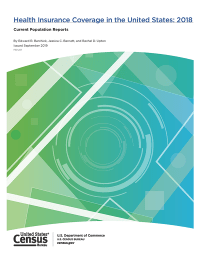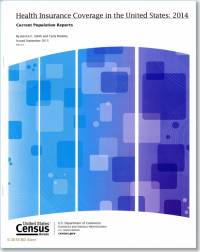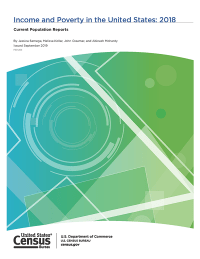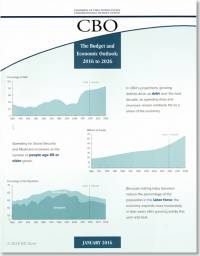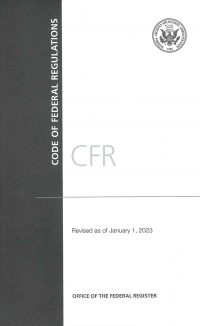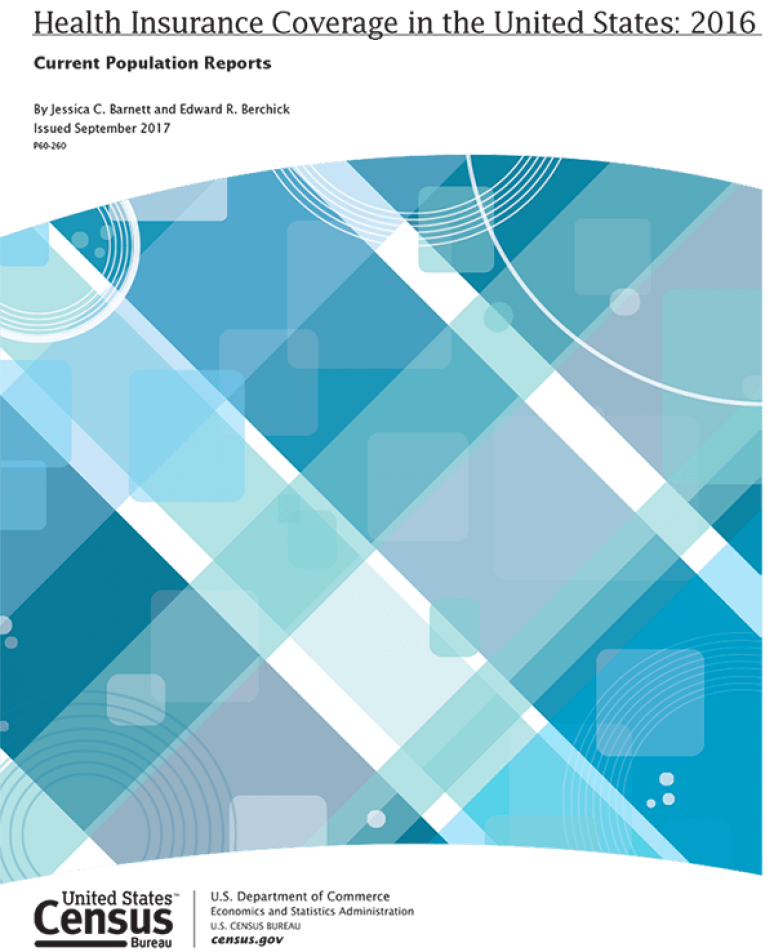
This report presents statistics on health insurance coverage in the United States based on information collected in the 2014, 2015, 2016, and 2017 Current Population Survey Annual Social and Economic Supplements (CPS ASEC) and the American Community Survey (ACS).
Some highlights
The uninsured rate decreased between 2015 and 2016 by 0.3 percentage points as measured by the CPS ASEC. In 2016, the percentage of people without health insurance coverage for the entire calendar year was 8.8 percent, or 28.1 million, lower than the rate and number of uninsured in 2015 (9.1 percent or 29.0 million).
The percentage of people with health insurance coverage for all or part of 2016 was 91.2 percent, higher than the rate in 2015 (90.9 percent).
In 2016, private health insurance coverage continued to be more prevalent than government coverage, at 67.5 percent and 37.3 percent, respectively. Of the subtypes of health insurance coverage, employer-based insurance covered 55.7 percent of the population for some or all of the calendar year, followed by Medicaid (19.4 percent), Medicare (16.7 percent), direct-purchase (16.2 percent), and military coverage (4.6 percent).
Between 2015 and 2016, the rate of Medicare coverage increased by 0.4 percentage points to cover 16.7 percent of people for part or all of 2016 (up from 16.3 percent in 2015). There was no statistically significant difference between 2015 and 2016 for any other subtype of health insurance.
Health Insurance providers,insurance advisors, Federal, state, and city health insurnace agency analysts and developers, health insurance activists.
Highlights
The uninsured rate decreased between 2015 and 2016 by 0.3 percentage points as measured by the CPS ASEC. In 2016, the percentage of people without health insurance coverage for the entire calendar year was 8.8 percent, or 28.1 million, lower than the rate and number of uninsured in 2015 (9.1 percent or 29.0 million).
The percentage of people with health insurance coverage for all or part of 2016 was 91.2 percent, higher than the rate in 2015 (90.9 percent).
In 2016, private health insurance coverage continued to be more prevalent than government coverage, at 67.5 percent and 37.3 percent, respectively. Of the subtypes of health insurance coverage, employer-based insurance covered 55.7 percent of the population for some or all of the calendar year, followed by Medicaid (19.4 percent), Medicare (16.7 percent), direct-purchase (16.2 percent), and military coverage (4.6 percent).
Between 2015 and 2016, the rate of Medicare coverage increased by 0.4 percentage points to cover 16.7 percent of people for part or all of 2016 (up from 16.3 percent in 2015). There was no statistically significant difference between 2015 and 2016 for any other subtype of health insurance.
Between 2015 and 2016, the percentage of people without health insurance coverage dropped for most ages under 65, with generally larger decreases for working-age adults (aged 19 to 64).
The percentage of uninsured children under age 19, 5.4 percent, did not significantly change between 2015 and 2016.
In 2016, the uninsured rate for children under age 19 in poverty, 7.0 percent, was higher than the uninsured rate for children not in poverty, 5.0 percent.
In 2016, non-Hispanic Whites had the lowest uninsured rate among race and Hispanic origin groups, at 6.3 percent. The uninsured rates for Blacks and Asians were higher than for non-Hispanic Whites, at 10.5 percent and 7.6 percent, respectively. Hispanics had the highest uninsured rate, at 16.0 percent.
Between 2015 and 2016, the percentage of people without health insurance at any time during the year fell 0.4 percentage points for non-Hispanic Whites, down to 6.3 percent. There was no statistical change in the uninsured rate for Blacks, Asians, or Hispanics during this period.
Between 2015 and 2016, the percentage of people without health insurance coverage at the time of interview decreased in 39 states. Eleven states and the District of Columbia did not have a statistically significant change in their uninsured rate.
Product Details
- Barnett, Jessica C.
- Current Population Reports, P60, No. 260
- Health Insurance


